Objectives
Aim 1. Improved Measurement Systems for Aircraft Engine Emissions
- To develop approaches for measurement protocols at engine exit and downstream within the evolving plume, across a range of operational conditions representative of the Landing Take-Off cycle (LTO) in a well-characterised test-cell. Measurements will provide characteristics of the near field physical and chemical composition of engine emissions, with and without engine oil breather contribution. Measurements will be taken across a range of inlet air conditions, which when coupled with the captive nature of the exhaust stack, will allow the impact of ambient conditions on plume evolution to be investigated.
- To measure on-wing main engine emissions over a range of operational and climatic conditions (seasonal and diurnal) to develop an improved understanding of exhaust plume composition and evolution in and around an airport.
- To measure emissions from aircraft engines using commercially available alternative fuel to investigate its impact on total PM formation and evolution in the plume as well as the wider airport environment.
- To measure, on the airframe, APU emissions across routine operational conditions to better understand and model their contribution to the physicochemical composition of the plume on the apron.
- To perform measurements of air quality in and around 3 international airports: Madrid-Barajas, Zurich and Copenhagen, to validate model developments under different operational and climatic conditions, and develop a proof of concept low-cost and low-intervention sensor network to provide routine data on temporal and spatial variability of key pollutants including UFP, total PM, NOx and SOx.
Aim 2. Advancing Aircraft Plume and Airport Modelling
- To investigate the microphysics and chemistry of pollutant formation and evolution (with emphasis on total PM) from the exit of the main engine and APU to identify limitations of the currently adopted regulatory approach towards an improved representation and parameterisations suitable for use in future dispersion modelling and regulatory standard setting.
- To describe the physical dynamics of the main engine and APU exhaust plume to move towards the development of validated parameterisations suitable for future dispersion modelling and regulatory standard setting. This will specifically consider the interaction of wing tip vortices during take-off and approach.
Aim 3. Bridging the gap between Aircraft Engine Certification and LAQ Regulation
- To describe the causality between the regulated gaseous and nvPM engine emission species and the subsequently evolved total PM plume concentrations, to better understand the uncertainties and constraints of current regulation stringencies for the prediction of LAQ.
- To build on the knowledge gaps and requirements of stakeholders to develop new outline agendas to benchmark and improve regulation of aircraft exhaust emissions that are better aligned to the needs and current understanding of airport air quality.
- To develop understanding of vPM and secondary PM precursor emissions at fleet level and within the context of regulatory standards development.
Aim 4. Protocols and Guidance for Air Quality and Health Impact Assessment
- To provide detailed aircraft exhaust modelling guidance, including validated datasets and parameterisations to the modelling and regulatory communities.
- To provide detailed guidance on measuring pollutants at airports with specific reference to UFP and the utility of low-cost sensor networks.
- To provide contribution to ICAO Doc 9889 (Airport Air Quality Manual) via the Committee on Aviation Environmental Protection (CAEP) working group participation, of which AVIATOR partners are established members.
- To work together with the consortium awarded Subtopic F, and link with teams engaged in airport air quality and health studies to develop protocols and methodologies for the capture of representative UFP, VOC and SVOC samples during on-wing measurements of aircraft engine emissions for utilisation by relevant health professionals for in-vitro and in-vivo assessment of health effects.
- To disseminate and communicate AVIATOR outcomes to the widest possible audience through existing regulatory, industry and community stakeholders.


 This project has received funding from the European Union’s Horizon 2020 research and innovation programme under Grant Agreement No 814801
This project has received funding from the European Union’s Horizon 2020 research and innovation programme under Grant Agreement No 814801
